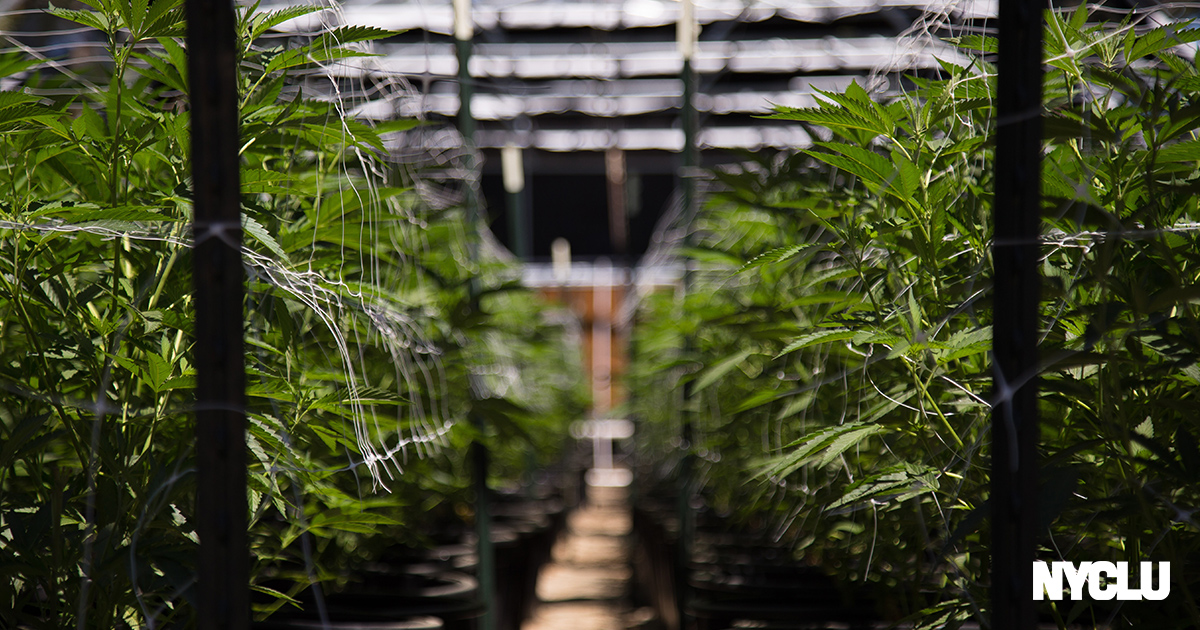How Legalizing Cannabis Makes the Case for Reparations
The new law begins to build the broader case for reparations in New York.

New York State has finally legalized cannabis.
Forty-eight years after the Rockefeller Drug Laws imposed mandatory 15 years to life sentences for possessing small amounts of marijuana, the plant will now be legal to grow and use.
It’s been a long road to this point. Decades of advocacy have chipped away at draconian laws and in 2019 New York came close to legalization. But the bill stalled, partly over disagreement about provisions in the legislation aimed at undoing the harms that cannabis criminalization created.
The bill that finally did pass, the Marijuana Regulation and Taxation Act, makes clear that progress must include repair. The law eliminates most existing misdemeanors and felonies related to cannabis from the state penal law. The reductions in criminal liability will be retroactive, meaning past convictions for crimes reduced or eliminated by the legislation will be expunged from or reduced on the person’s criminal record.
The new law also begins to build the broader case for reparations in New York. Marijuana criminalization is a textbook case for how structural racism and white supremacy are deeply embedded across laws and policies in our state.
As early as the turn of the 20th century, marijuana was framed by the dominant culture as dangerous and associated with Black and Brown people. New York City was an early adopter of criminalization, adding cannabis to a list of illegal drugs in 1914, followed by a statewide ban in 1927.
Cannabis criminalization is just one of the many ways that New York has harmed Black people.
After the 1936 anti-marijuana propaganda film, Reefer Madness, marijuana was prohibited at the federal level in 1937. Despite findings from a 1944 study commissioned by New York Mayor Fiorello La Guardia showing that fears over the harms of marijuana were unfounded, enforcement around cannabis in New York continued.
In 1970, Nixon signed the Controlled Substances Act into law, which remains intact today. Former Domestic Policy Chief for the Nixon Administration, John Ehrlichman famously admitted that the criminalization of marijuana and other substances was driven by political expedience and not public safety. As he said, the administration “had two enemies: the antiwar left and black people.”
Ehrlichman went on to say that the administration “couldn’t make it illegal to be either against the war or Black, but by getting the public to associate the hippies with marijuana and Blacks with heroin. And then criminalizing both heavily, we could disrupt those communities.” They used this war on drugs to “arrest their leaders, raid their homes, break up their meetings.” With support from the media, they vilified “them night after night on the evening news” all the while lying about the harms of drugs.
New York enthusiastically advanced this agenda. By 1973, Governor Nelson Rockefeller signed into law New York’s infamous drug laws and continued the long American history of appealing to white people by promising to punish Black people.
New York’s drug laws became a national blueprint for mass incarceration. Mandatory minimum sentences and three-strikes laws helped to balloon prison populations from 330,000 in 1973 to the current 2.3 million nationwide.
Throughout the 1980s and into the 2000s ad campaigns like the famous “This is your brain on drugs” commercials flooded airwaves and classrooms across America. Black and Brown New Yorkers bore the brunt of arrests and incarceration – despite similar, and even in some reports, greater rates of use by white people. While anti-marijuana messaging pushed cannabis as a “gateway drug,” it was more accurately a gateway to the carceral system.
After decades of criminalization, New York’s new marijuana law takes a race-conscious approach to repairing race-specific harms. For example, the bill mandates that revenue from cannabis sales be invested in communities most harmed by marijuana criminalization.
Cannabis criminalization is just one of the many ways that New York has harmed Black people. While the state is often recognized as the first in the nation to abolish slavery, New York was also the last state to repeal mandatory sentences and it continues to profit off of the forced labor of incarcerated people.
New York has a history of sustained, systemic oppression of descendants of enslaved Africans and Black people. Its economy was built off of and benefited from enslavement. The decades of mass criminalization, residential redlining and displacement, combined with health care, environmental, and economic racism deny Black people equal access and opportunities. But they also ensure white people continue to increase their wealth and power.
State lawmakers must do the necessary work of determining what reparations New York owes the Black community for the damage it has inflicted. A bill in the State Legislature would begin this work by establishing a commission to study the impact of slavery on the descendants of enslaved Africans and those from the diaspora, and provide remedies to past and ongoing harms.
True reparative justice will mean not only cash payments to make up for past economic theft from Black communities, but also the acknowledgment and intentional dismantling of systems that perpetuate racial discrimination today.
Marijuana legalization offers a blueprint for how to begin rooting out the white supremacy enmeshed in New York laws. Our state has been a national leader in mass incarceration. Now we can be a leader in repairing those harms.
